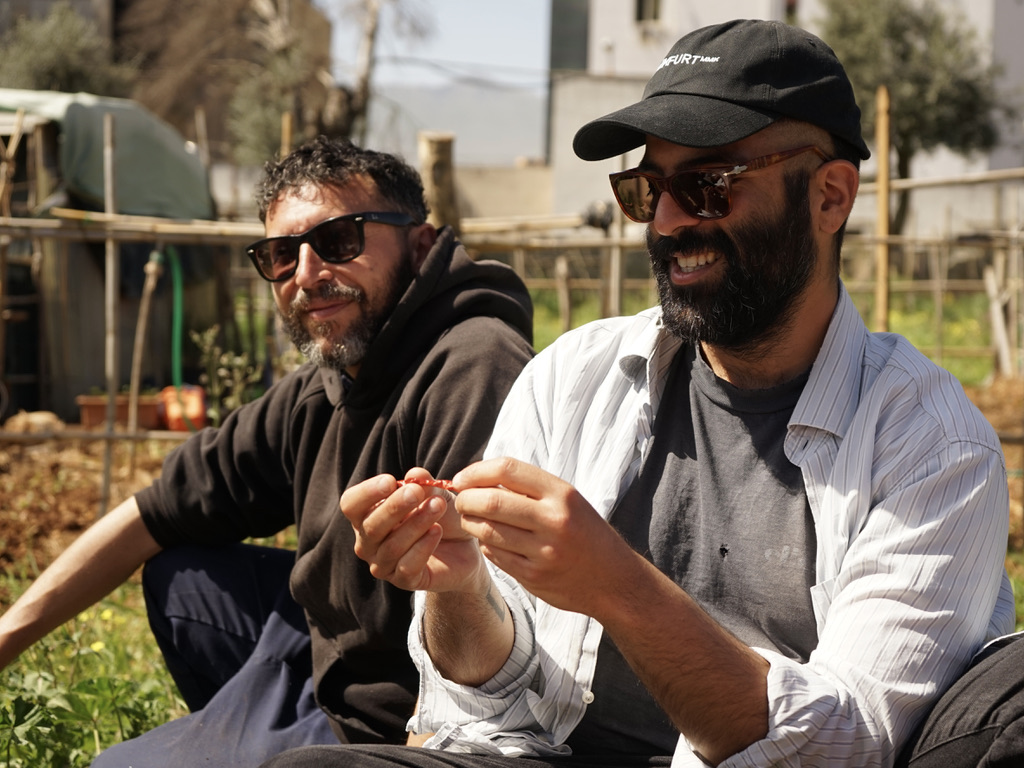DOTE Garden is a physical space in the city of Palermo, conceived and cared for by the collective Aterraterra. It is born out of Listening to Seeds, the third moment in our Year of Listening. You can visit the garden by reading the stories of the seeds that have been planted in it. This is one of the stories.
Dear Luca and Fabio,
The ingredient I have chosen is connected to one of my first food memories and is deeply rooted in my family’s history and my culinary upbringing.
Scrambled eggs with beurre noisette. The first dish I made for myself all by myself when I was eight years old. The caramelized, sweet nutty flavor of the butter combined with the salty creaminess of the eggs was comforting and liberating at the same time. I was sitting in the sunny window sill of our house on the fourth floor of the flat building somewhere deep in Osdorp, the far western outskirts of Amsterdam, where I lived with my sister and parents. I was just about to take the first bite – this time I managed to prepare the eggs precisely as I meant them to be so i was very happy and in full anticipation – then it hit me…
I went to the fridge and got the jar with my dad’s home made Sambal Badjak – that spicy, fragrant, slightly caramelized chili condiment that was a staple in our kitchen – I dropped a tiny spoonful of it on my eggs. Sheer magic.
Ever since chillies were first brought to Indonesia, Malaysia and Singapore by Portuguese traders in the fifteenth century, they have been embraced as though they were a native ingredient. In Indonesia as well as in the cuisine of the people from the former Dutch East Indies, where my family originates from, you almost always find them on the table – in one form or another. Crushed into a fragrant paste or made into a curry or even whole and raw as a condiment to nibble on or just eat from throughout the meal. There are hundreds of different types or varieties. The variety I am talking about is one that has been hybridized for centuries already, it has a floral flavor, a pugnency which tends to lower your body temperature. In Indonesian cuisine and other Asian cuisines, the heat of the chili – in Indonesia they call it ‘pedas’- is not intended to overpower the food. Heat from chillies is always balanced by sweetness, sourness and saltiness. And you always have to accompany it with plenty of steamed rice. The specific chili I would like to discuss here is the Holland chili. The fresh, red Holland chili also known as Dutch or finger chili. It is ruby red, has a glossy skin with a narrow body that looks like a finger that ends in a sharp point. It is the chili that is most commonly known here in the Netherlands. They are about ten centimeters long and between 0,5-1 cm thick. It has juicy, thick flesh, a tight and waxy skin which keeps them from spoiling to rapid I presume. They tend to vary a lot in spiciness, from mildly hot to scorching. Though when you cook them they lose a lot of their pungency. It is a hybrid of Indonesian and Malaysian chilies and were developed in the Netherlands by Dutch botanists who were eager to reproduce the Indonesian food at home. It is now an ingredient that is shipped and used throughout the world. Here you can find them in Asian shops or specialty
markets usually in bulk, wrapped in plastic, but also in the more regular supermarkets they sell them for too much money and with little to no flavor or spice. In Indonesian or other South East Asian cuisines people rarely seed the chilies. Many times in recipes you get instructions that you have to deseed the chilies, to be able to control the heat or spiciness more, but actually all the flavor nuances of chillies live in the seeds and the surrounding, cotton like membranes. These are indeed the hottest or spiciest parts of the chili but also the most flavorful. If you remove them you deprive the whole chili and the dish, of the potential it could have. So if you want less heat: use less chili!
Click here to read/see the different stories…
Photo by: Ségolène Bulot
